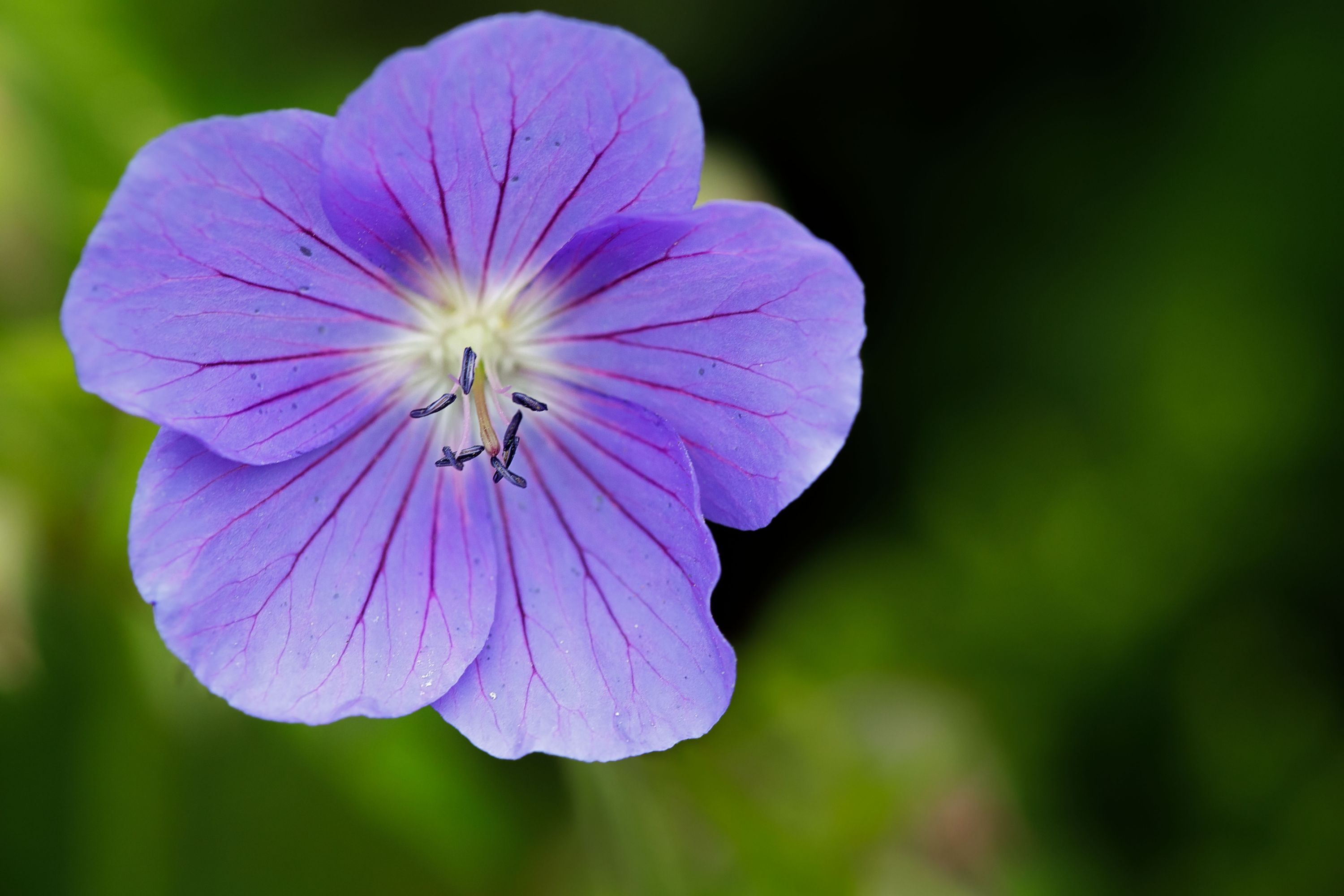Wood cranesbill
(Geranium sylvaticum)

Description
Geranium sylvaticum, also known as Wood cranesbill, is a flowering plant species that belongs to the Geranium genus, which is a group of perennial herbs commonly referred to as cranesbills. Geranium sylvaticum is native to Europe, Asia, and North Africa, and is known for its showy, blue-purple flowers that bloom in the spring and early summer. In this article, we will explore the various aspects of Geranium sylvaticum, including its taxonomy, morphology, ecology, cultivation, and medicinal uses. Taxonomy Geranium sylvaticum is a member of the Geranium genus, which is part of the Geraniaceae family. The genus Geranium comprises approximately 422 species, many of which are native to Europe, Asia, and Africa. The species name sylvaticum means "of the woods" in Latin, and reflects the plant's natural habitat in forested areas. Morphology Geranium sylvaticum is a perennial herb that can grow up to 60 cm in height. It has hairy stems and leaves, which are deeply divided and palmately lobed, giving them a fern-like appearance. The leaves are approximately 5-10 cm in diameter, and are arranged in a rosette at the base of the plant. The flowers of Geranium sylvaticum are hermaphroditic, meaning they have both male and female reproductive organs. They are approximately 2-4 cm in diameter, with five petals that are blue-purple in color. The flowers are arranged in loose clusters at the top of the stem, and bloom from May to July. Ecology Geranium sylvaticum is native to a wide range of habitats, including woodlands, meadows, and rocky areas. It prefers moist, well-drained soils, and can tolerate both acidic and alkaline conditions. The plant is pollinated by insects, particularly bees, and produces nectar that is a food source for many species of butterflies. Cultivation Geranium sylvaticum is a popular ornamental plant, and is often grown in gardens for its showy flowers and attractive foliage. It is relatively easy to cultivate, and can be propagated by seed or division. The plant prefers moist, well-drained soils, and should be watered regularly during dry spells. It can be grown in full sun or partial shade, and is generally disease and pest-resistant. Medicinal uses Geranium sylvaticum has been used for centuries in traditional medicine to treat a variety of ailments. The plant contains a number of compounds with medicinal properties, including tannins, flavonoids, and phenolic acids. These compounds are believed to have anti-inflammatory, antibacterial, and antiviral properties, and may also help to reduce pain and promote wound healing. In traditional medicine, Geranium sylvaticum has been used to treat diarrhea, dysentery, and other gastrointestinal disorders. It has also been used to treat respiratory infections, such as bronchitis and pneumonia, as well as skin conditions like eczema and psoriasis. Some studies have also suggested that the plant may have potential anticancer properties, although more research is needed in this area. In conclusion, Geranium sylvaticum is a fascinating plant with a long history of medicinal use. Its striking blue-purple flowers and fern-like foliage make it a popular choice for gardeners, while its medicinal properties make it an important plant in traditional medicine. Whether grown for its ornamental value or its healing properties, Geranium sylvaticum is a plant that is sure to captivate anyone who encounters it.
Taxonomic tree:







